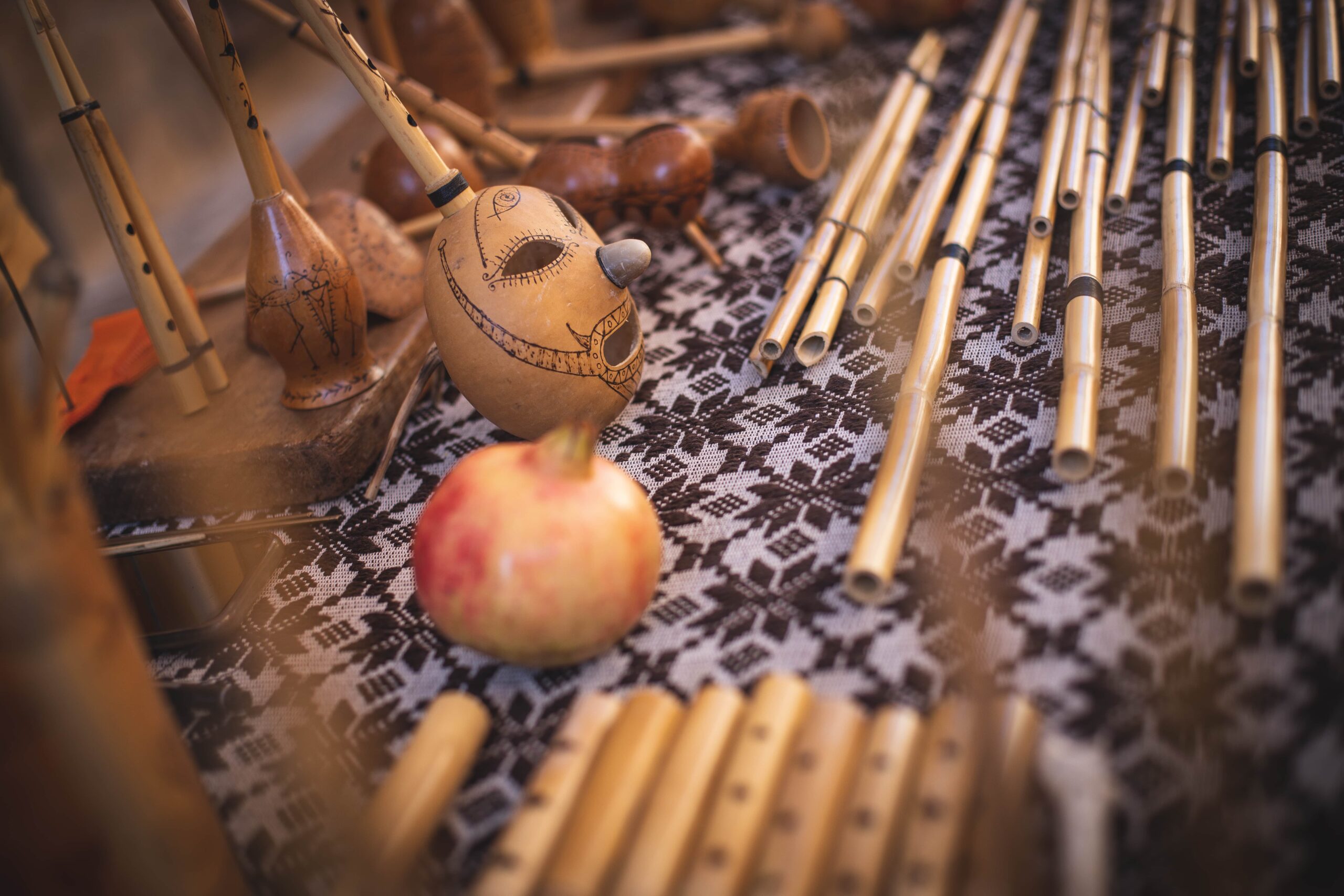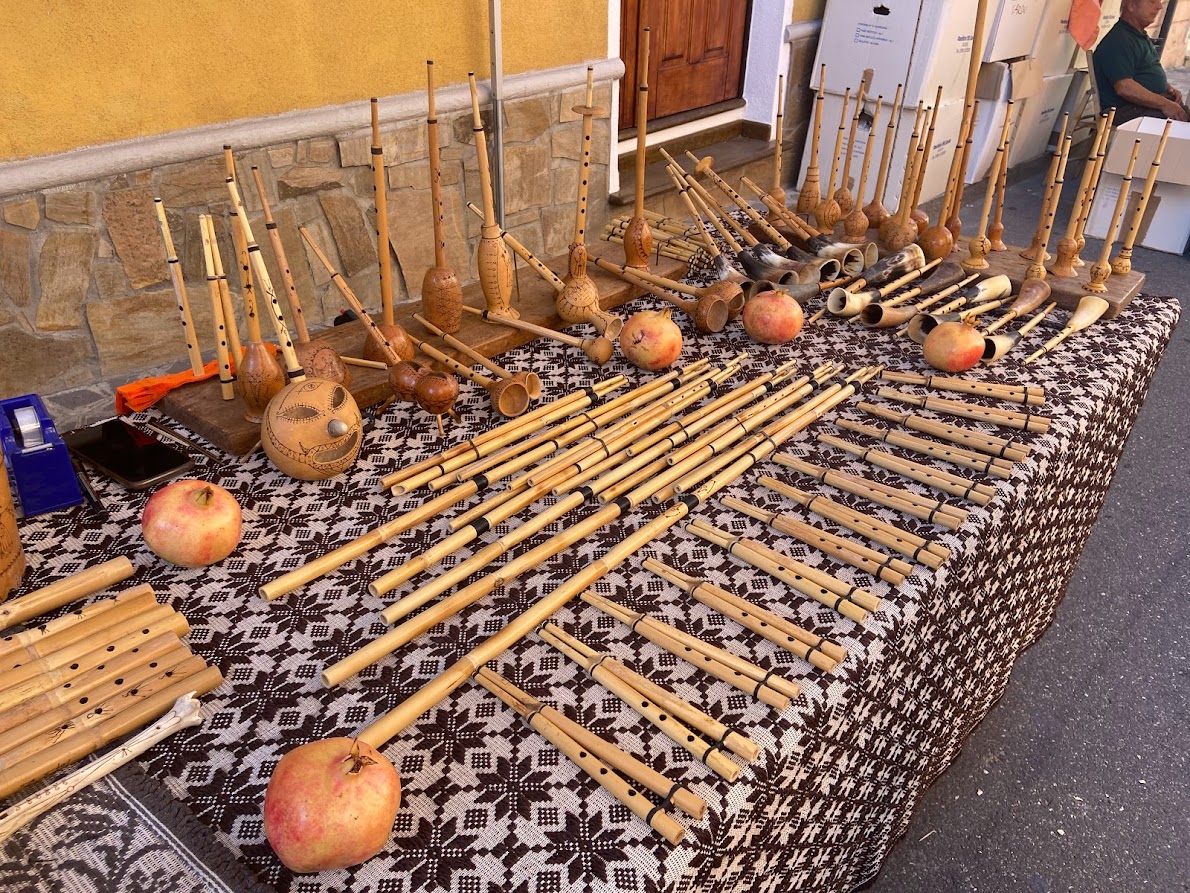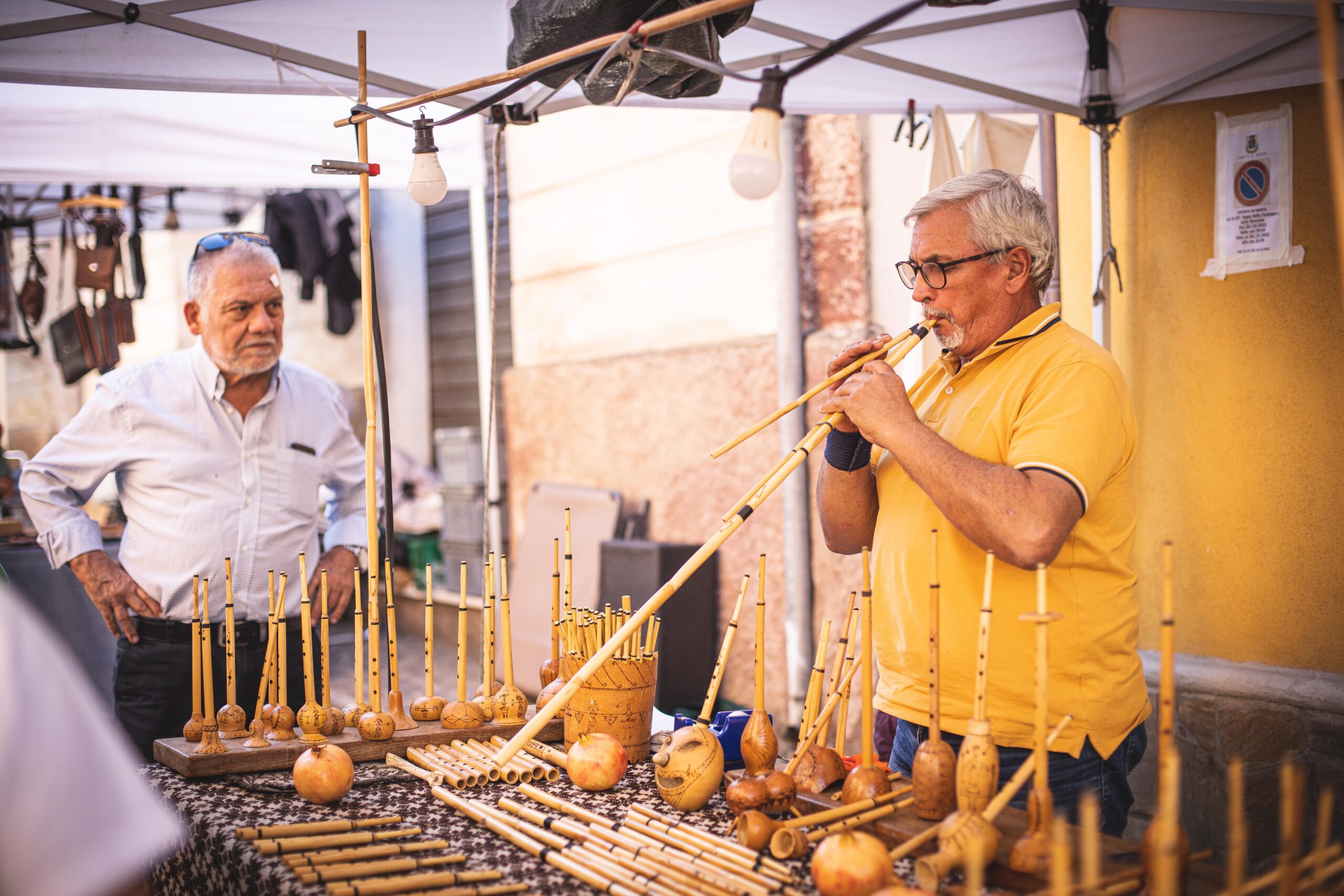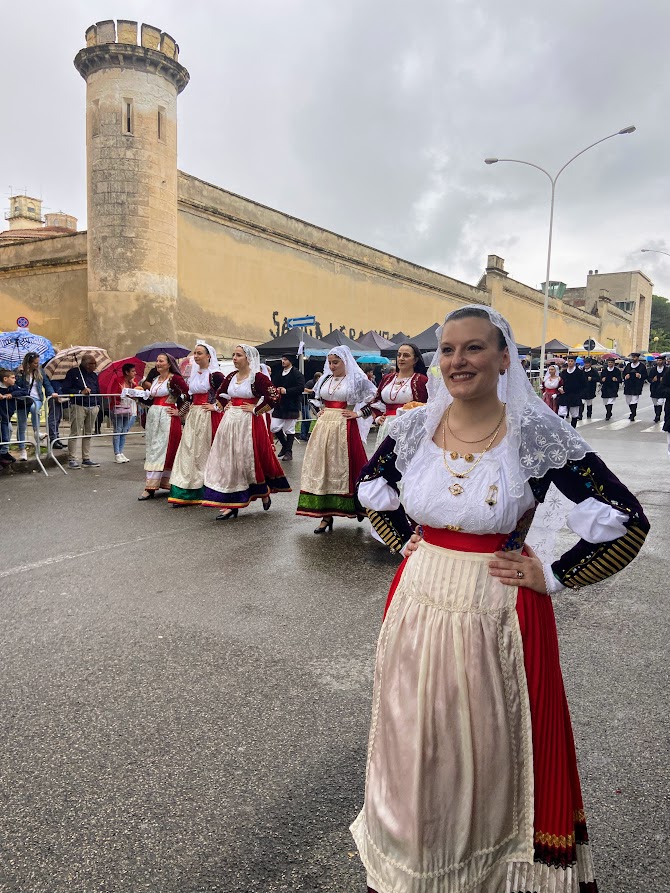
Launeddas
Launeddas The unique wind instrument composed of three reeds, each of which emits its own melody, has been known since prehistoric times, according to available excavations. Tumbu, the longest of the reeds, is hole less, emits only one note, and sets the key of the whole instrument. The second reed, mancosa manna, which has four finger holes on the top and a fifth at the bottom, emits accompanying notes and is tied with a string to tumbu. The third, mancosedda, which also has four finger holes and a fifth in the lower part, emits melodic notes, but is not connected to the previous two reeds. Tumbu is made with a single cut of common reed, while mancosa manna and mancosedda are made of river reed, which is thicker and thus gives the instrument a specific colouring. The instrument is tuned using beeswax. The sound of the Launeddas resembles to those of bagpipes and thanks to three pipes it emits continuous polyphonic melodies. A special circular breathing technique is used while playing the instrument. There are two apprenticeships in Sardinia, one around Sarrabus, the other around Sinis, which have been largely responsible for the transmission of musical knowledge from generation to generation and have allowed the instrument to survive into modern times. These days you can listen to its melody during various folklore celebrations, especially in the areas in the south and west of the island, where it often accompanies the traditional Sardinian round dance su ballu tundu.



